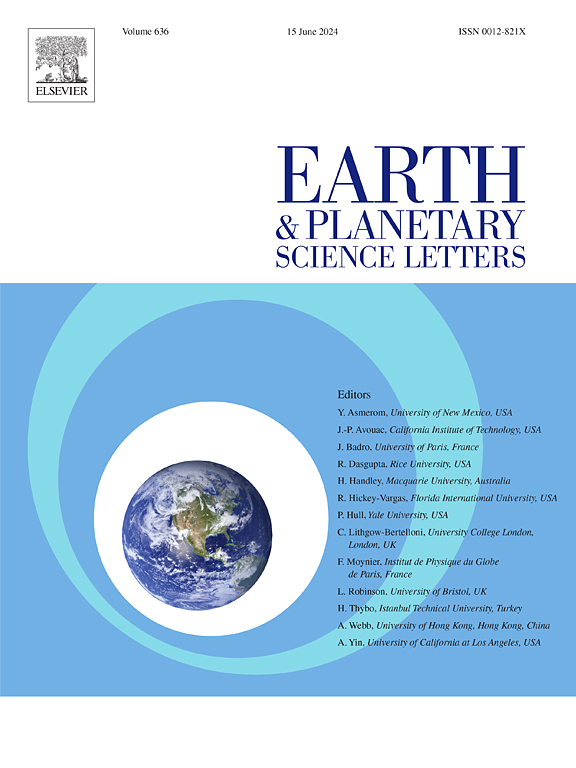Direct pathway of incorporating dietary nitrogen in shell-bound matrix of the planktic foraminifera Trilobatus sacculifer
IF 4.8
1区 地球科学
Q1 GEOCHEMISTRY & GEOPHYSICS
引用次数: 0
Abstract
The stable isotopes of organic nitrogen (N) preserved within the fossil tests of foraminifera have been used to reconstruct past changes in surface ocean nitrogen cycling processes. Modern observations show temporal and spatial covariations of δ15N between planktic foraminifera and particulate organic matter in the surface ocean, suggesting that heterotrophic foraminifera record the N isotopic compositions of their diet. However, little is known about the underlying mechanisms of N translocation from diet into foraminiferal biomass (i.e., intrashell protoplasm) and finally embedded within their mineralized shells. We investigate the pathways of N uptake from diet into foraminiferal calcite tests by feeding the planktic, dinoflagellate-bearing Trilobatus sacculifer with two strains of brine shrimp (Artemia) with different 15N/14N isotopic compositions, and monitoring the δ15N evolution of both biomass and shell-bound matrix. The two feeding groups show comparable results, that δ15N of both the biomass and shell-bound matrix evolve towards their diet sources without expressing trophic enrichment in δ15N. However, we observe that the δ15N of the biomass and shell-bound matrix exhibit distinct mixing behaviors. Biomass δ15N is well modelled as a mixture between the original biomass and newly metabolised dietary intake, suggesting T. sacculifer has a closed N system with minimum N leakage. Meanwhile, shell-bound δ15N quickly approaches the δ15N of the diet, and is offset from the biomass δ15N. This indicates a direct pathway of N incorporation from the diet into shell-bound organics during calcification, without significant exchange with the overall biomass pool.
求助全文
约1分钟内获得全文
求助全文
来源期刊

Earth and Planetary Science Letters
地学-地球化学与地球物理
CiteScore
10.30
自引率
5.70%
发文量
475
审稿时长
2.8 months
期刊介绍:
Earth and Planetary Science Letters (EPSL) is a leading journal for researchers across the entire Earth and planetary sciences community. It publishes concise, exciting, high-impact articles ("Letters") of broad interest. Its focus is on physical and chemical processes, the evolution and general properties of the Earth and planets - from their deep interiors to their atmospheres. EPSL also includes a Frontiers section, featuring invited high-profile synthesis articles by leading experts on timely topics to bring cutting-edge research to the wider community.
 求助内容:
求助内容: 应助结果提醒方式:
应助结果提醒方式:


